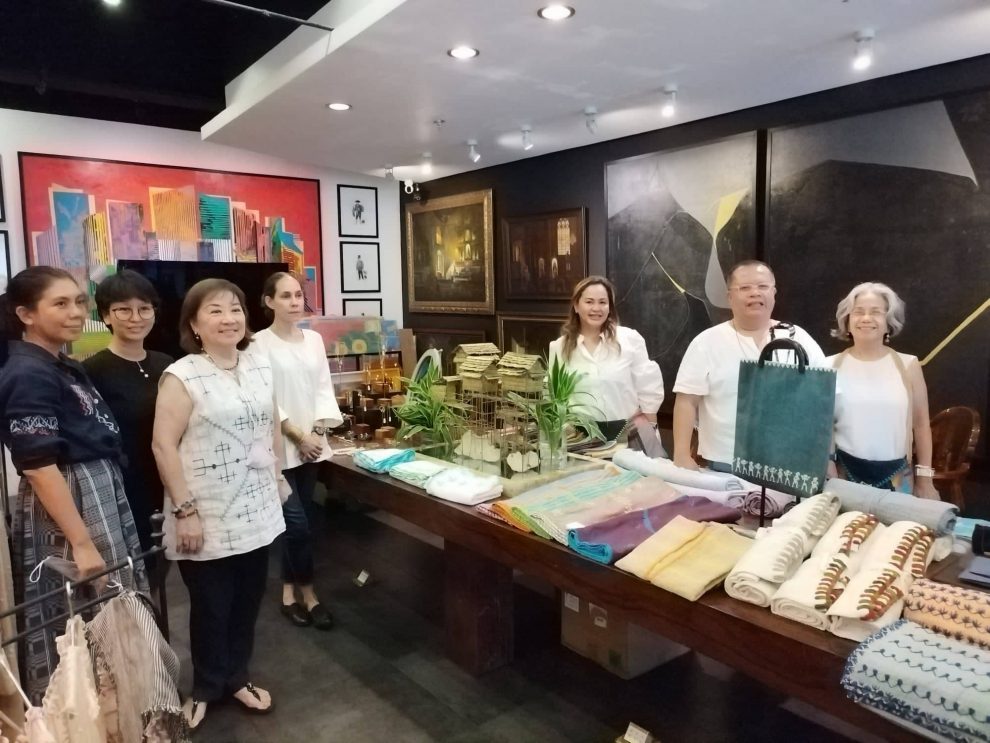The tradition and culture of different communities and indigenous people took centerstage during the TATSULOK sa Cebu: A Lifestyle Popup over the weekend.
The much-anticipated event that featured the designs did not disappoint.
The Filipino products that were showcased include the beautiful silk scarves and other embroidered pieces from Balay Ni Atong by Al Valenciano, the contemporary Filipiniana outfits and bags from Filip+Inna by Lenora Luisa Cabili and the exquisite heirloom and antique jewelry of Natalia Lagdameo.
Organized by The Holistic Coalition of the Willing (HoliCOW PH) and MaGNA CMGN Solutions Inc., the event aimed to feature products inspired by the craftmanship of different communities and indigenous people.
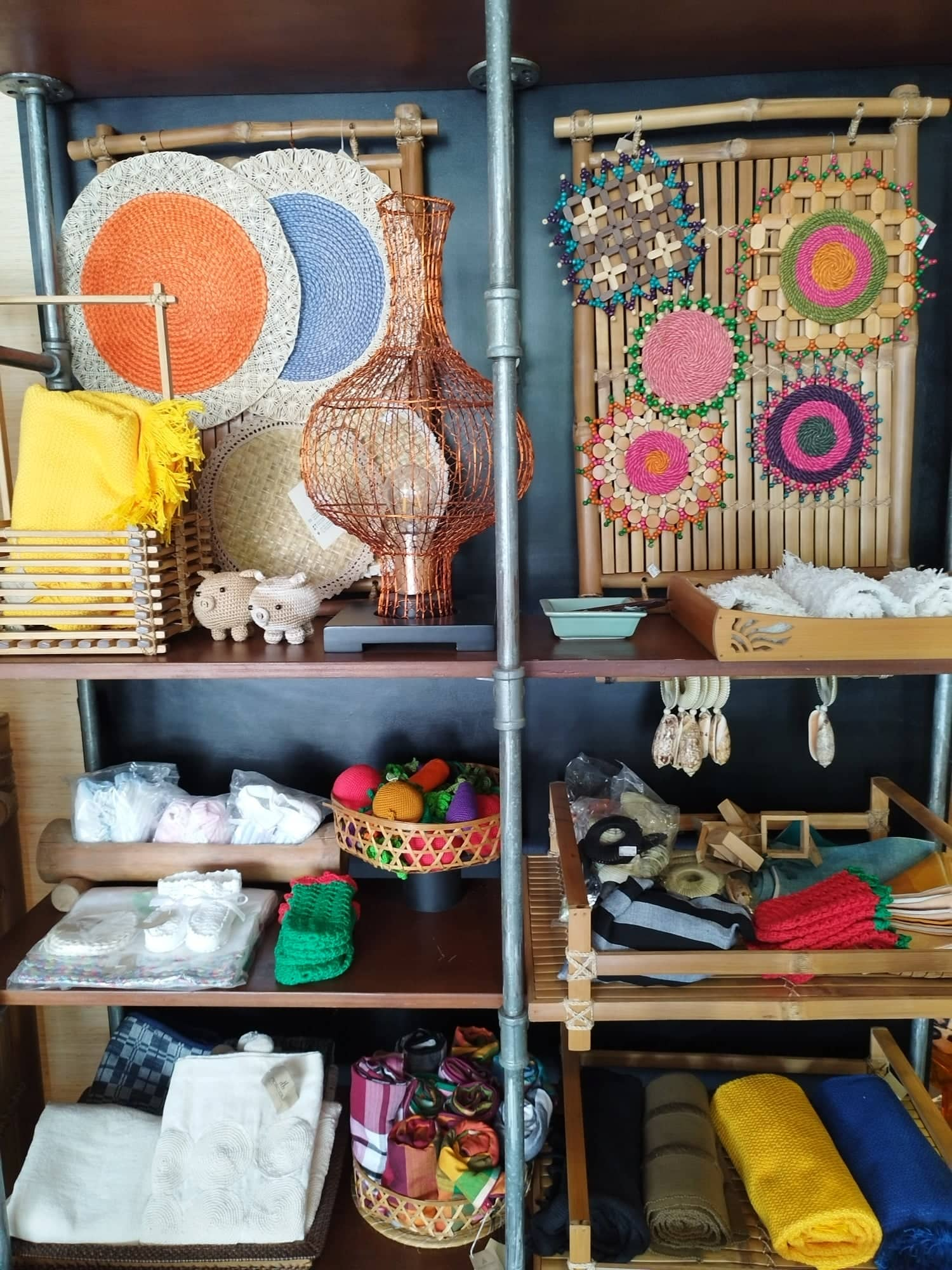
HoliCOW PH collaborates with communities all over the Visayas. Featured here are assorted home and living pieces from Cebu and Negros
“Our relationship with them (TATSULOK designers) has been since 2018 when we hosted their first popup. We’re very happy to host them back with us again. Every time they come to Cebu, they bring pieces curated for the Cebu crowd. Individually, their designs are known to celebrate, uplift the work of Filipino artisans from all over the Philippines,” said Kae Batiquin of HoliCOW.
Ms. Batiquin said the communities from all over the Philippines are represented in the designs that displayed at the popup.
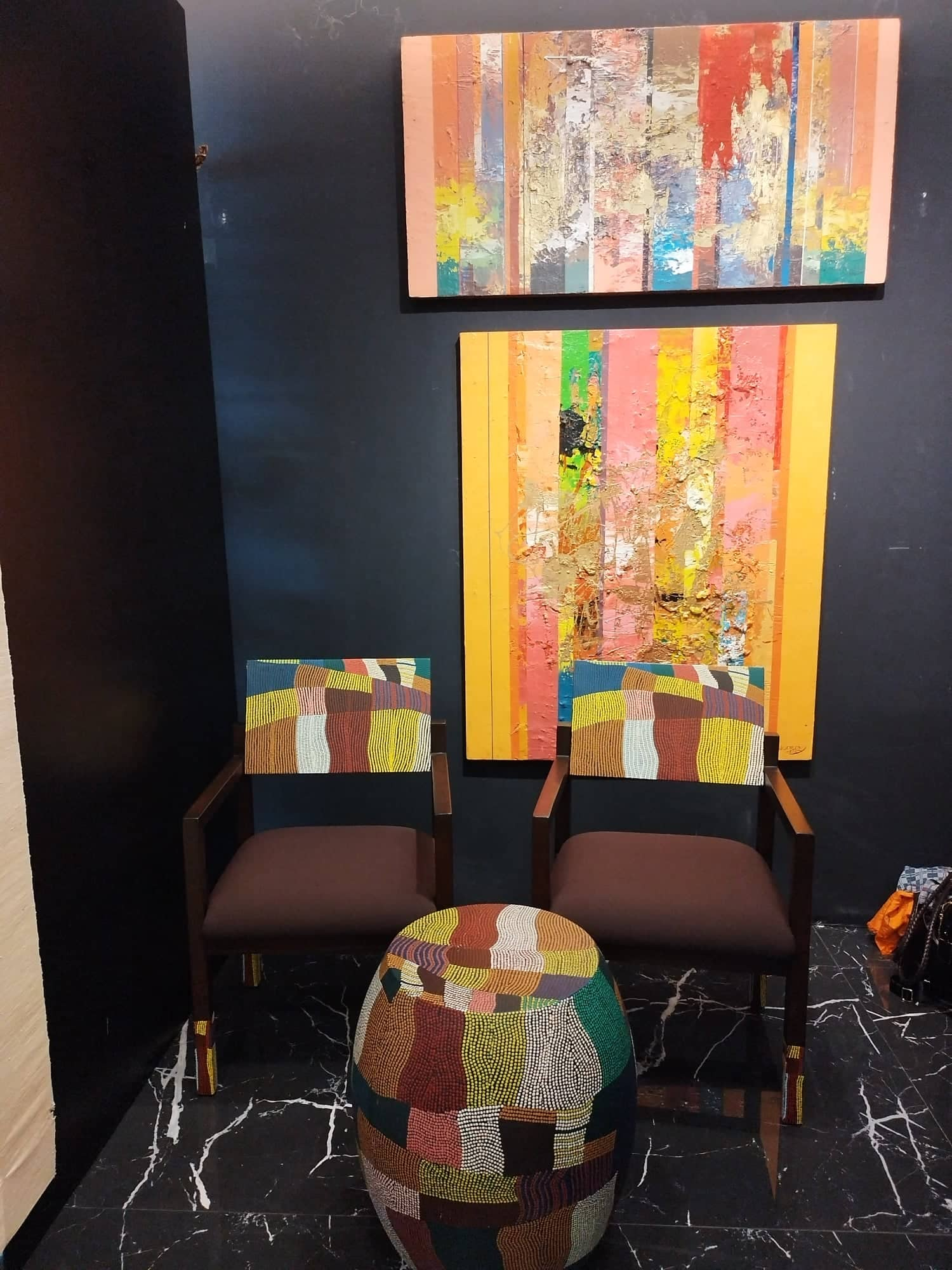
The EUNICE dot-arte collection by HoliCOW PH co-founder Debbie Palao featuring two dining armchairs and end table in Rainbow Serpent palette
“Our values and our advocacies genuinely aligned, which is why it is a very organic fit to have them here with us,” she added. HoliCOW sustainability, authenticity and identity in products.
“HoliCOW will always be there for some of our advocacies, which are quite plenty. But most importantly, the sustainability and authenticity. The products here are authentically designed by our designers,” furniture designer and HoliCOW co-founder Debbie Palao said.
Valenciano’s designs include beautiful soft silk scarves and hard silk fabrics using natural dyes as well as traditionally design bags.
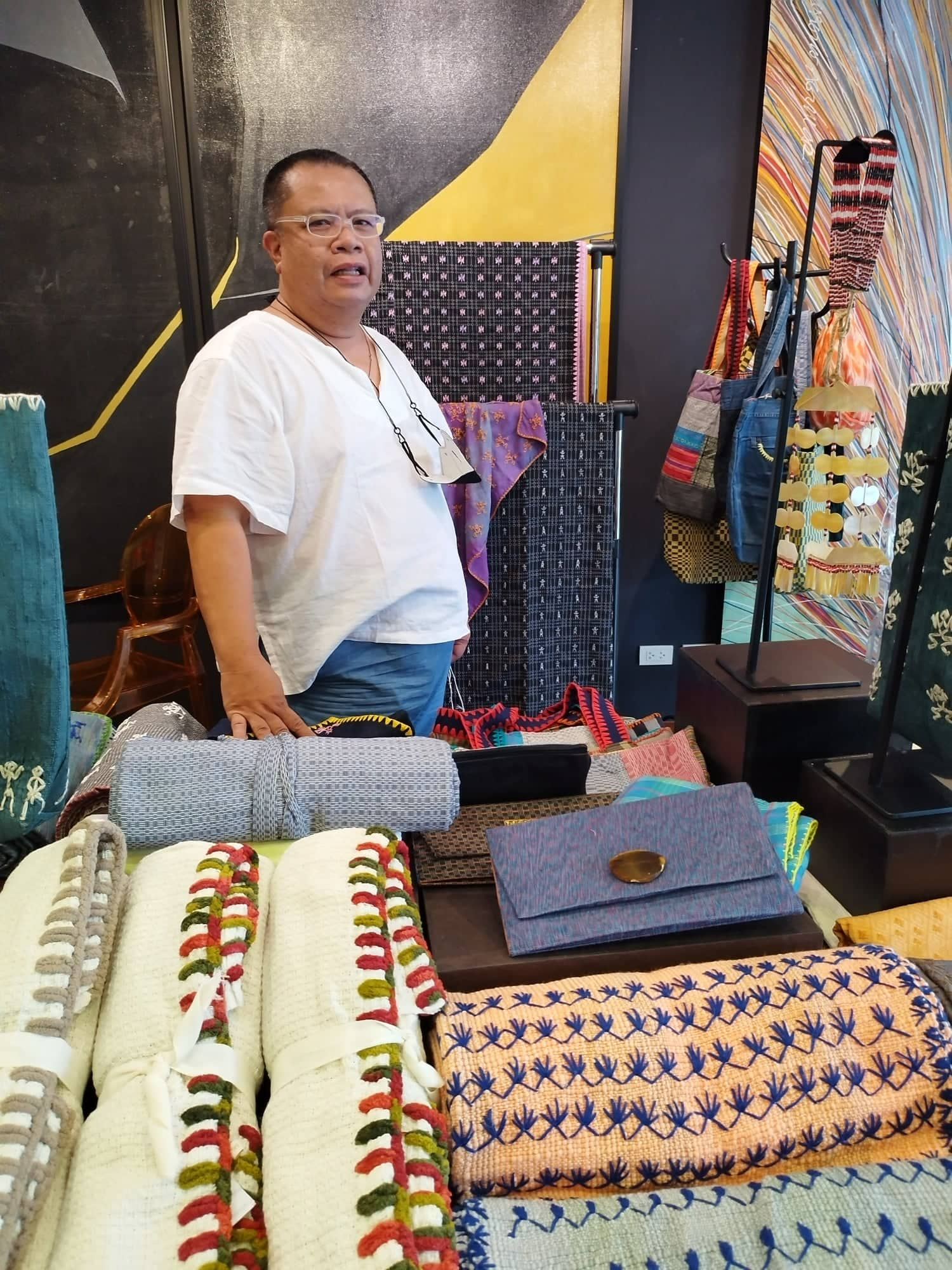
Mr. Al Valenciano of Balay ni Atong
“They are traditional but what we do is we make them more current, by transforming them into products that are reusable,” explained Valenciano whose venture into the design business was accidental.
He recalled that he was researching traditional textiles for museums so he worked with the communities in Ilocos region to learn how these are woven. He then sold the finished products to friends, providing additional income for the communities.
When he informed the communities that the research has indeed, the communities then asked him how they can sell their products. He realized that he was bridging the market to the community.
Al then decided to professionalize the production, giving the community the direction on colors with designs based on tradition. Ang Balay ni Atong does exports but only supplies specialty and boutique shops that handle one-of-a-kind items since their designs are handmade and slow art.
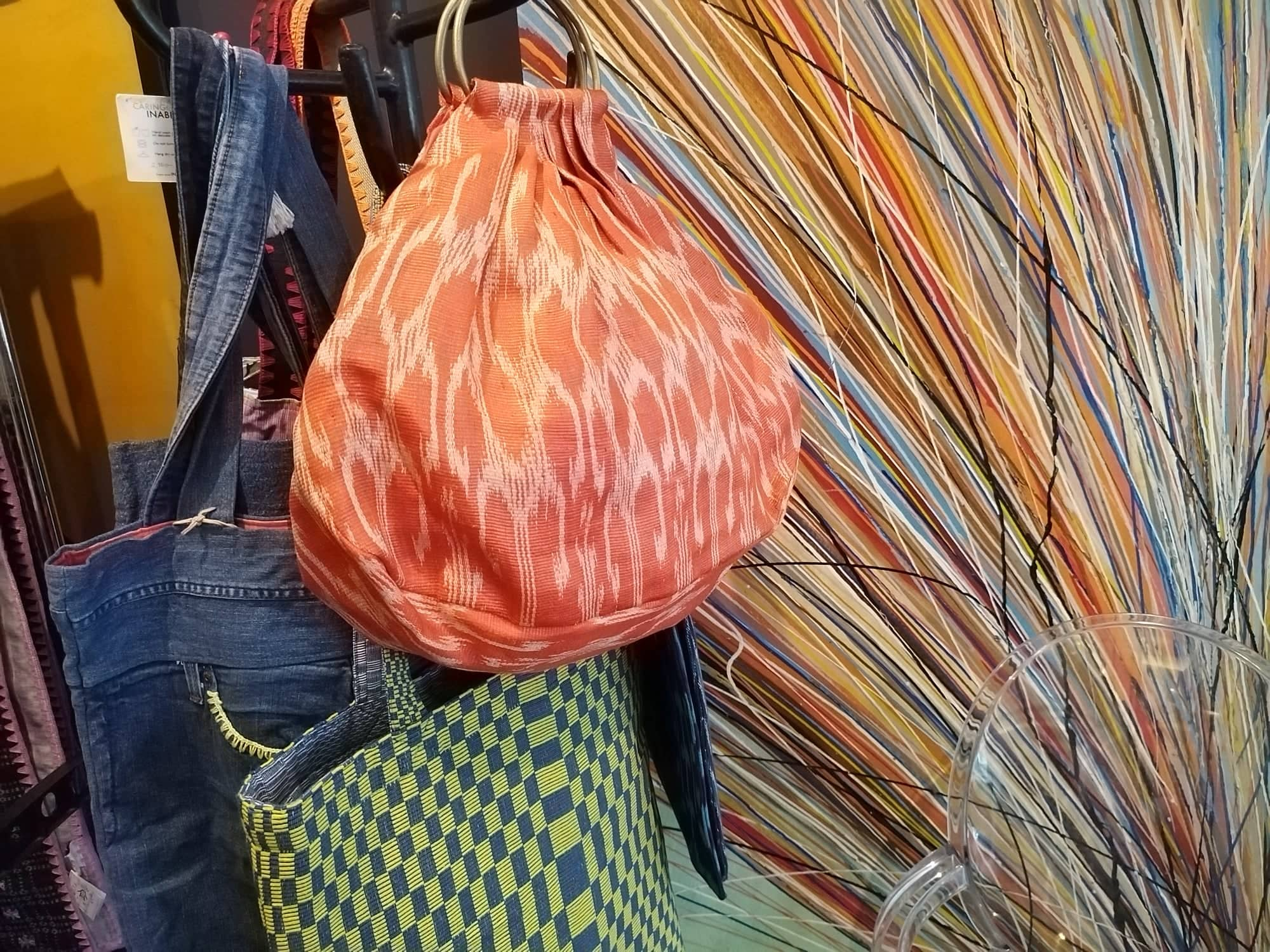
Tinalak bag in orange in mixed cotton & raffia by Balay Ni Atong
“More than making a business out of it, we make sure that tradition is kept alive and kept going,” Al stressed. He works with 12 to 13 communities with each community have 10 to 15 workers doing embroidery, beading, sewing and weaving.
He has gained recognition for his innovations in preserving traditions like sustainable silkworm culture to produce very fine, very beautiful silk fiber.
Valenciano also served as adviser to HoliCOW PH and its partner Argao Habloneras’ for various projects that aim to revitalize and document Cebu’s own unique weaving traditions. He is an advocate for the documentation and archiving of Filipino traditional arts and crafts, according to Ms. Mayen Angbetic Tan of HoliCOW.
Filip+Inna founder and designer Lenora Luisa Cabili works with 18 to 21 indigenous people, mostly in Mindanao, and traditional groups in the Philippines.
The IP and traditional groups include the Sama, Tausug, Yakan, Manobo, Bagobo, Maranao, T’boli, Manobos-Surigao and two groups of Bilaan in Mindanao; piňa weavers in the Visayas; Mangyan in Mindoro, embroiderers of Lemery and Taal in Batangas, Lumban in Laguna, the Gaddang in northern Luzon and the piňa weavers of Abra.
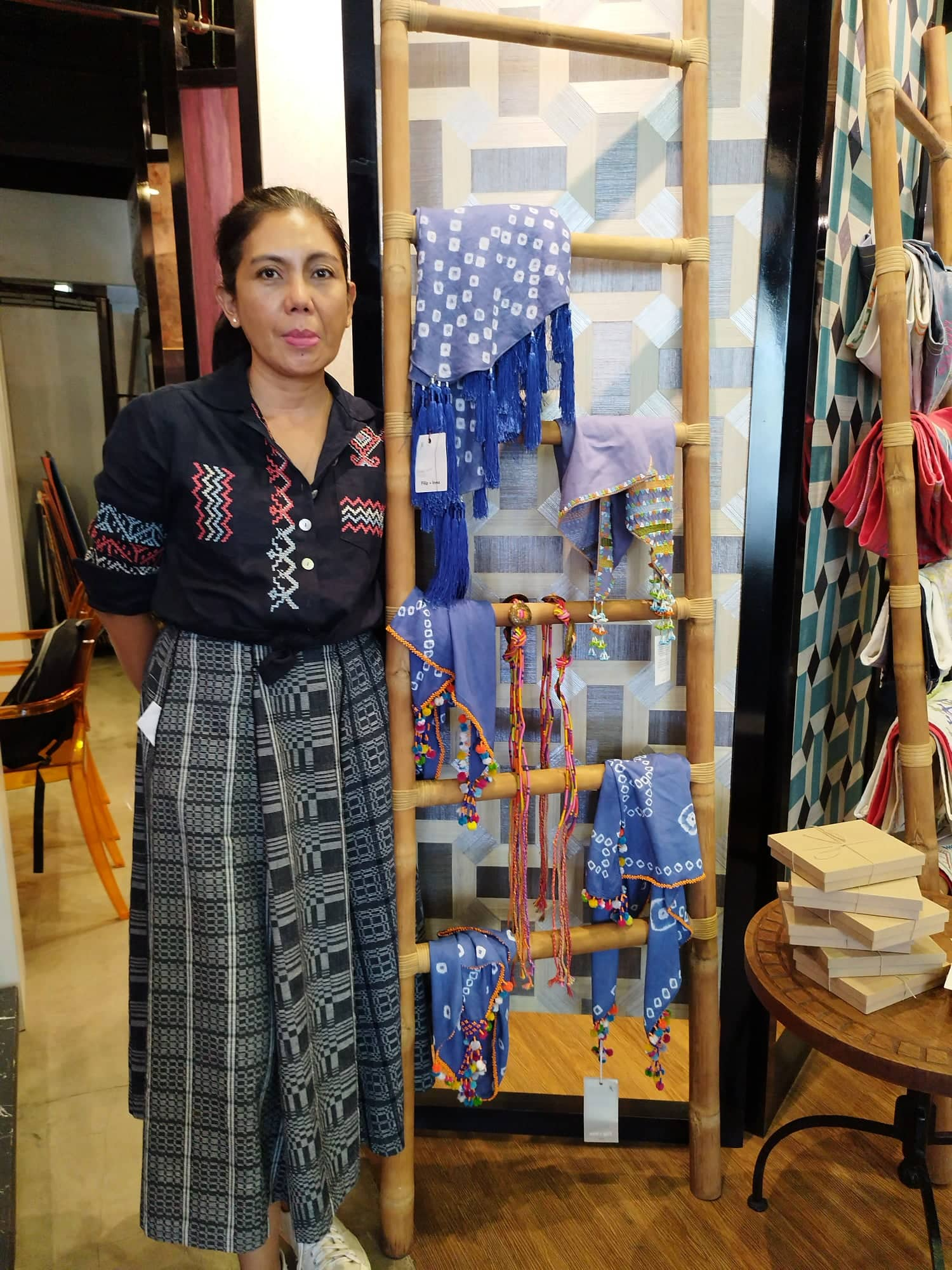
Filip+Inna’s founder and designer Lenora Luisa Cabili
“We are targeting the tradition within the indigenous or traditional culture and try to incorporate it into more contemporary clothing,” said Ms. Cabili, who once danced with the Bayanihan Dance Company.
She added that her stint with the dance company exposed her to the rest of the country. “It was a fun way of learning about our culture. And combined with my love for fashion, I wanted to create something different.”
Ms. Cabili also stressed the need to preserve Filipino culture. “Our culture is our fingerprint. It is what define us a people. And if we are not aware of our traditions and what our culture is all about then we don’t preserve it and it’s a disservice to those who have gone before us,” she stressed.
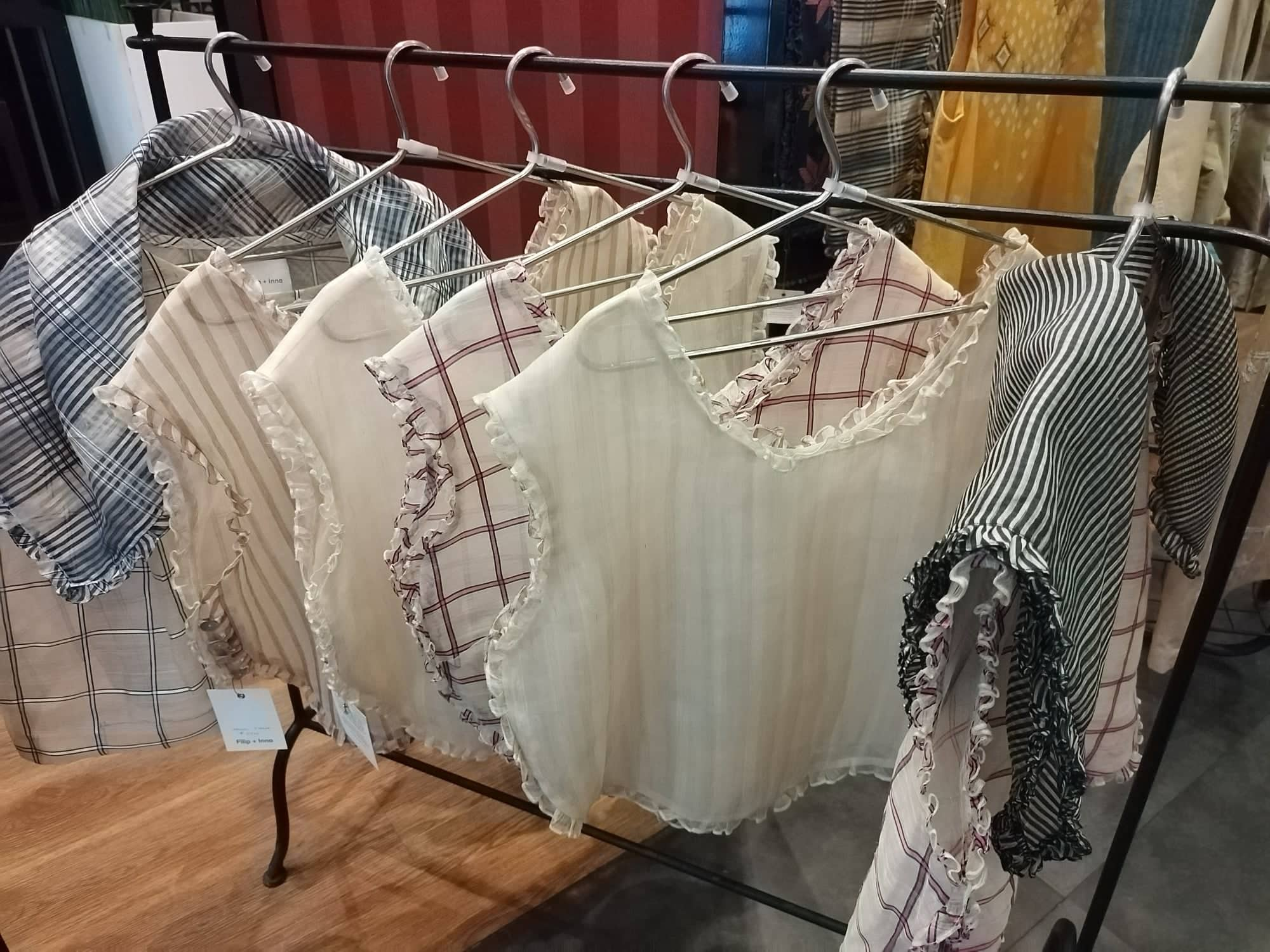
Kimonas in fine pina thread for a cool, chic layer-over, with matching casual Panuelo by Filip+Inna
Filip+Inna designs are usually Filipina basics focusing of Philippine culture and tradition and pieces in embroidery such as the kimona, camisa, terno, tapis and saya. Ms. Cabili has established a weaving center in Lake Sebu.
Meanwhile, Natalia Lagdameo started her jewelry business with having a personal collection of heirloom pieces.
“I’ve been collecting the heirloom pieces (such as) colonials, tambourines and creollas.,” Ms. Lagdameo said. “Those acquired in good conditions, we restore them to original format. While the pieces that are no longer whole, I redesign them into new pieces of jewelry using antique components,” she said.
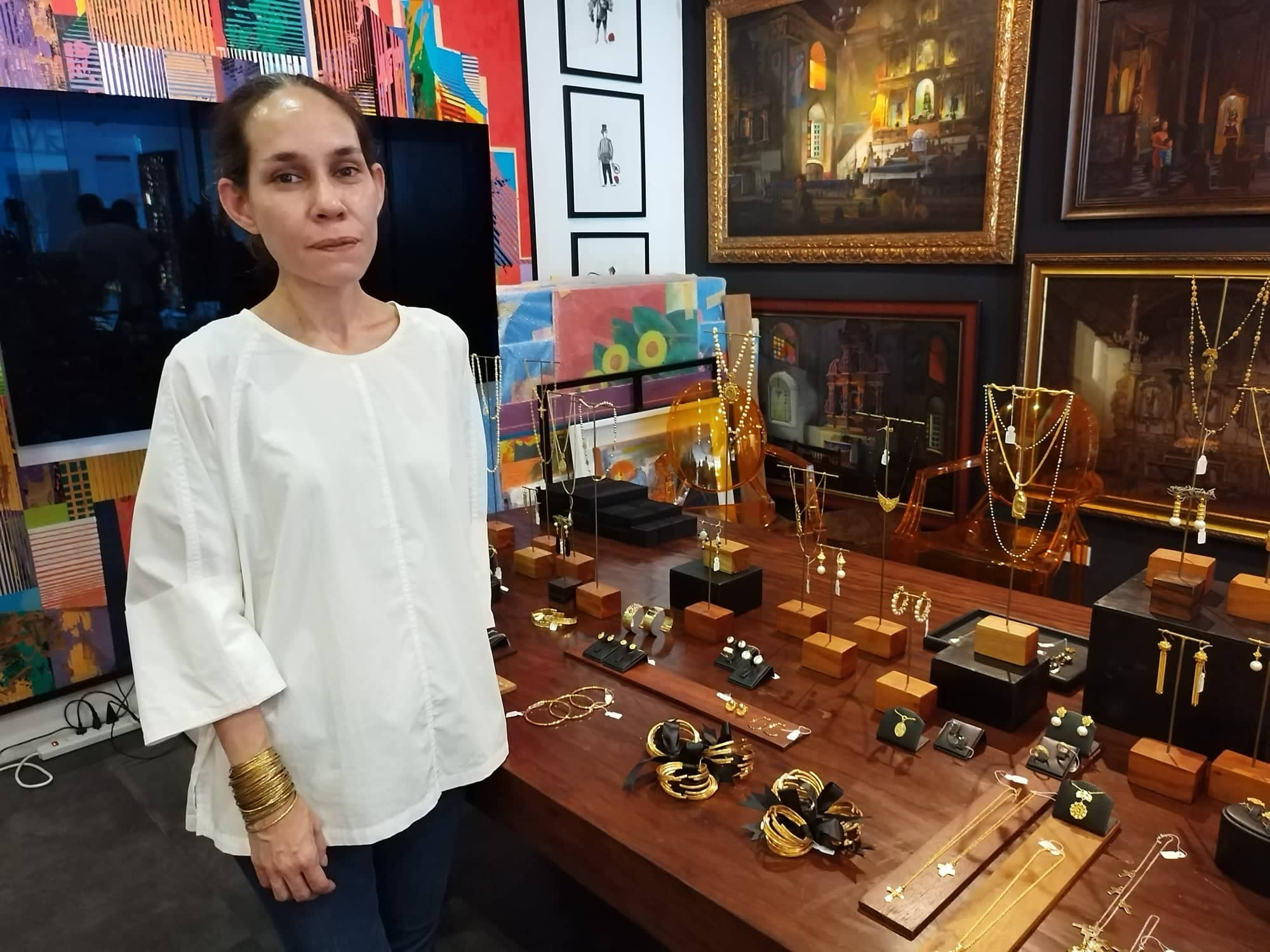
designer Ms. Natalia Lagdameo
Her jewelry is inspired by designs from antique and heirloom Filipino, made of brass embellished with precious to semi-precious stones.
Nlagdameo’s best-selling creation is the Giniling bangles, thin gold-plated brass bangles worn layered on the forearm by the indigenous group of the Cordillera region. Each one representing a significant date in a woman’s life.
“Most of my communities are based in Cordillera up north in Luzon. We work with the modern pieces. I design them, we manufacture them in the traditional way of sand cast and box cast for the brass items. And I work with them for the Giniling bangles,” she explained.
Ms. Lagdameo works with three main communities, who are not full time plateros. They are farmers take care of rice paddies. They do the jewelry after the planting and before the harvest season.
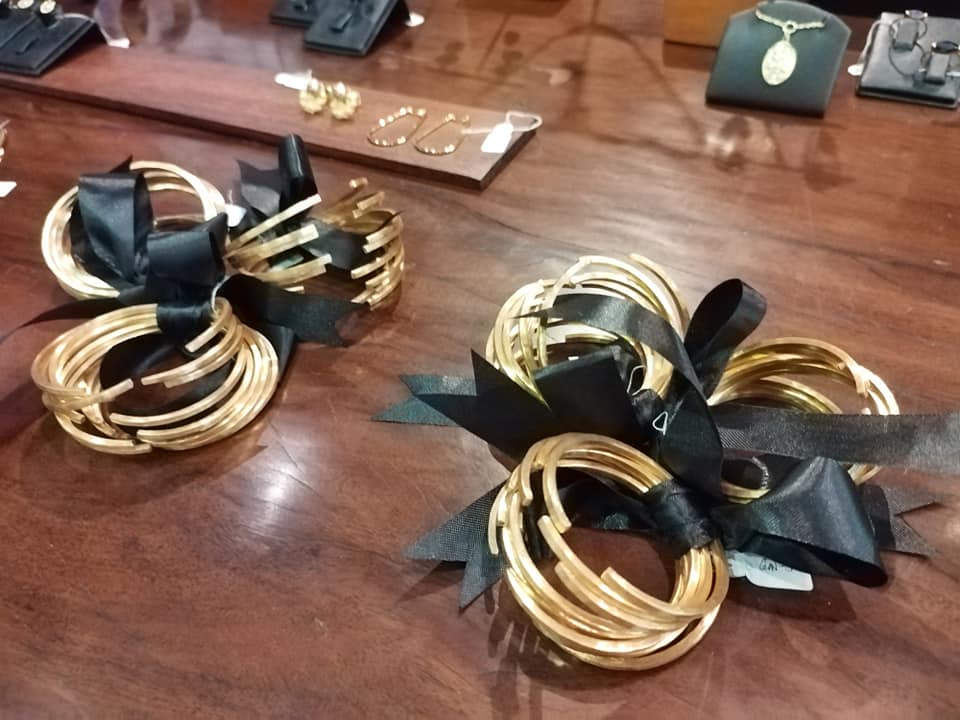
Natalia Lagdameo’s signature creation Giniling bangles
“I’m hoping to be able to keep the craft going so that the younger generations can learn,” she said, adding that they have some apprentices.
NLagdameo’s work has appeared in runways all over the world. She also does meticulous restoration of genuine antiques.








